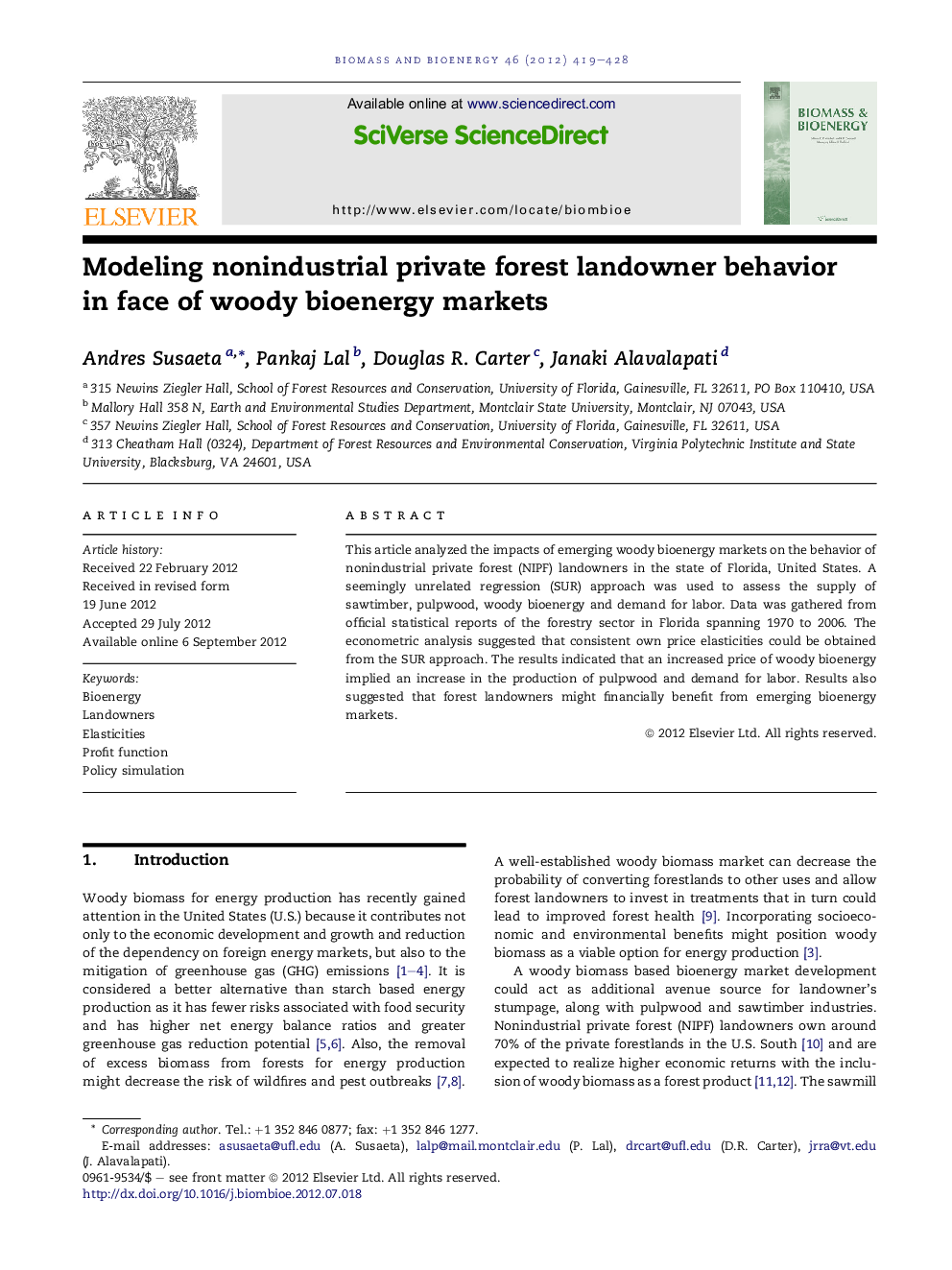| Article ID | Journal | Published Year | Pages | File Type |
|---|---|---|---|---|
| 677175 | Biomass and Bioenergy | 2012 | 10 Pages |
This article analyzed the impacts of emerging woody bioenergy markets on the behavior of nonindustrial private forest (NIPF) landowners in the state of Florida, United States. A seemingly unrelated regression (SUR) approach was used to assess the supply of sawtimber, pulpwood, woody bioenergy and demand for labor. Data was gathered from official statistical reports of the forestry sector in Florida spanning 1970 to 2006. The econometric analysis suggested that consistent own price elasticities could be obtained from the SUR approach. The results indicated that an increased price of woody bioenergy implied an increase in the production of pulpwood and demand for labor. Results also suggested that forest landowners might financially benefit from emerging bioenergy markets.
► We modeled the effects of emerging woody bioenergy markets on the behavior of private forest landowners. ► We assessed the supply of sawtimber, pulpwood, wood bioenergy and demand for labor. ► Consistent own price elasticities were obtained from our econometric model. ► An increased price of wood bioenergy implied an increase in the production of pulpwood and demand for labor. ► Forest landowners might financially benefit from emerging bioenergy markets.
